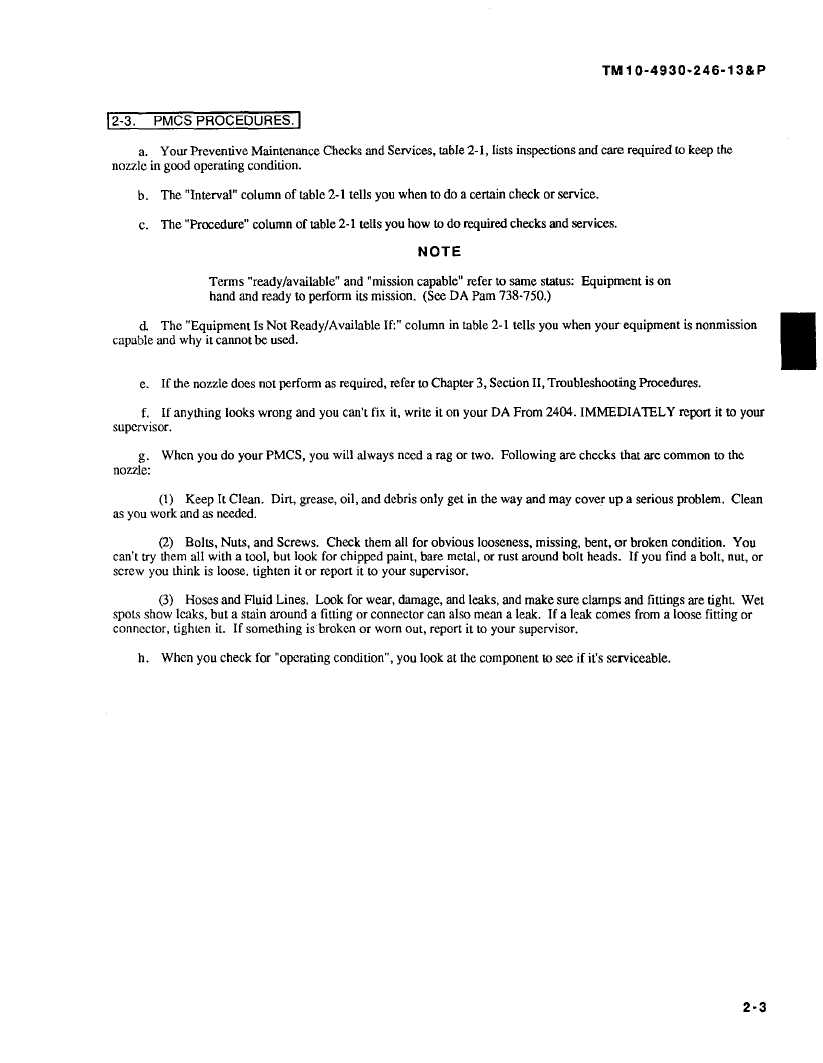|
| |
TM 10-4930-246-13&P
2-3.
PMCS PROCEDURES.
a.
Your Preventive Maintenance Checks and Services, table 2-1, lists inspections and care required to keep the
nozzle in good operating condi don.
b.
The "Interval" column of table 2-1 tells you when to do a certain check or service.
c.
The "Procedure" column of table 2-1 tells you how to do required checks and services.
NOTE
Terms "ready/available"
and "mission capable" refer to same status: Equipment is on
hand and ready to perform its mission. (See DA Pam 738-750.)
d
The "Equipment Is Not Ready/Available
If:" column in table 2-1 tells you when your equipment is nonmission
capable and why it cannot be used.
e. If the nozzle does not perform asrequired, refer to Chapter 3, Section II, Troubleshooting Procedures.
I.
If anything looks wrong and you can't fix it, write it on your DA From 2404. IMMEDIATELY
report it to your
supervisor.
g.
When you do your PMCS, you will always need arag or two. Following are checks that are common to the
nozzle:
(1)
Keep It Clean. Dirt, grease,oil, and debris only get in the way and may cover up a serious problem. Clean
as you work and as needed.
(2)
Bolts, Nuts, and Screws. Check them all for obvious looseness, missing, bent, or broken condition.
You
can't try them all with a tool, but look for chipped paint, bare metal, or rust around bolt heads. If you find abolt, nut, or
screw you think is loose. tighten it or report it to your supervisor.
(3)
Hoses and Fluid Lines. Look for wear, damage, and leaks, and make sure clamps and fittings are fight. Wet
spots show leaks, but a stain around a fitting or connector can also mean a leak. If a leak comes from a loose fitting or
connector, tighten it. If something is broken or worn out, report it to your supervisor.
h.
When you check for "operatmg condition", you look at the component to see if it's serviceable.
2-3
|

